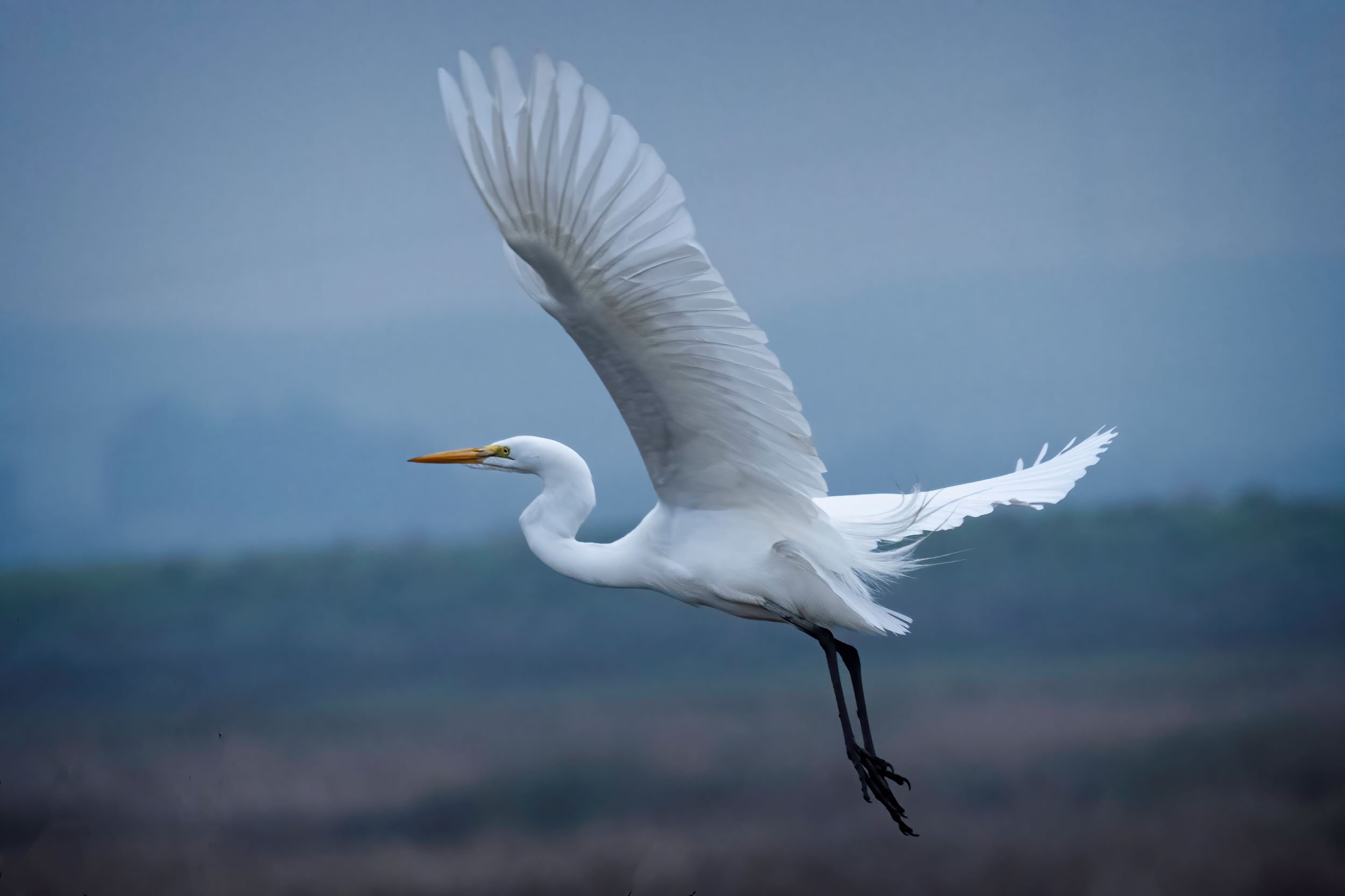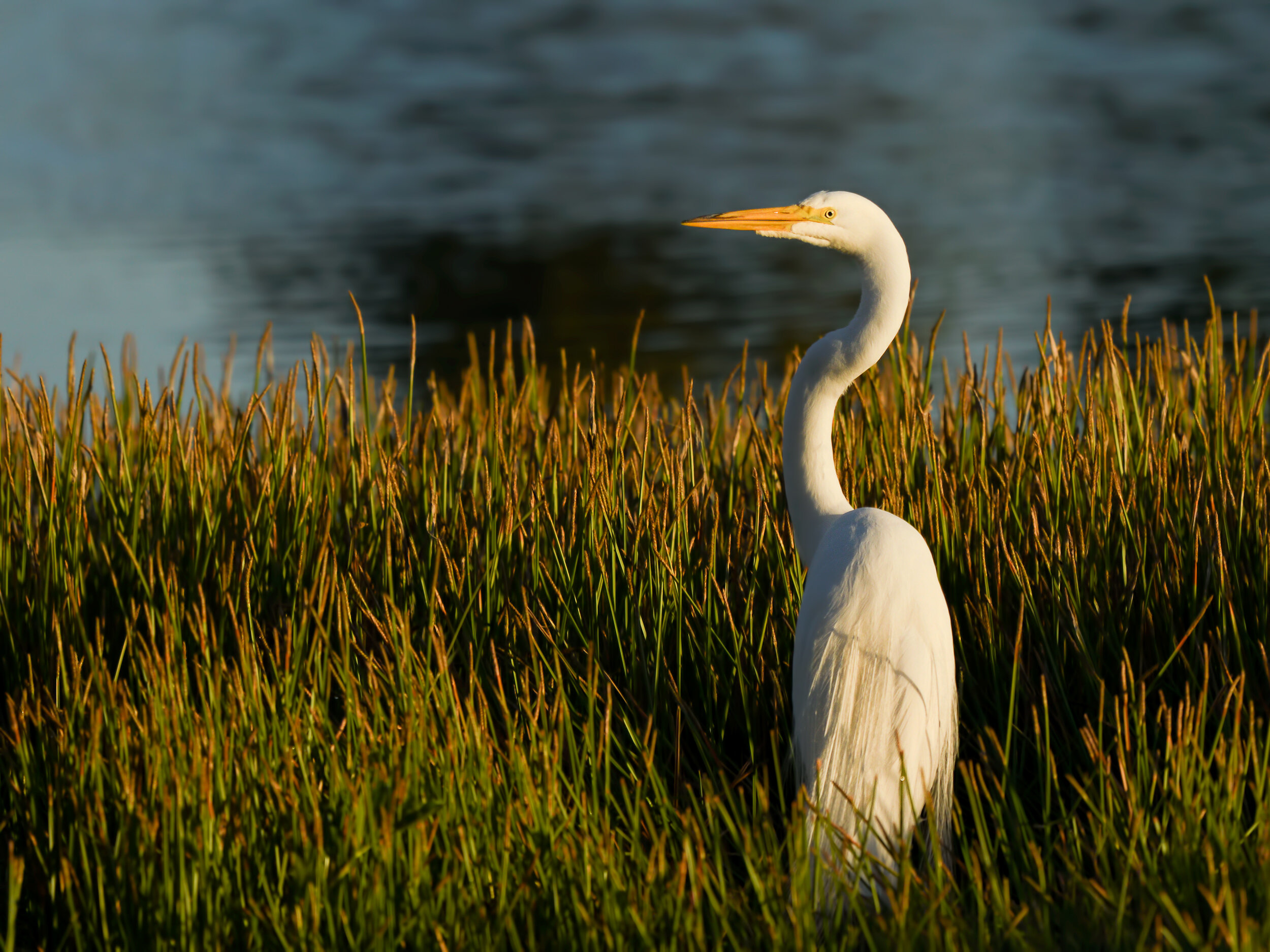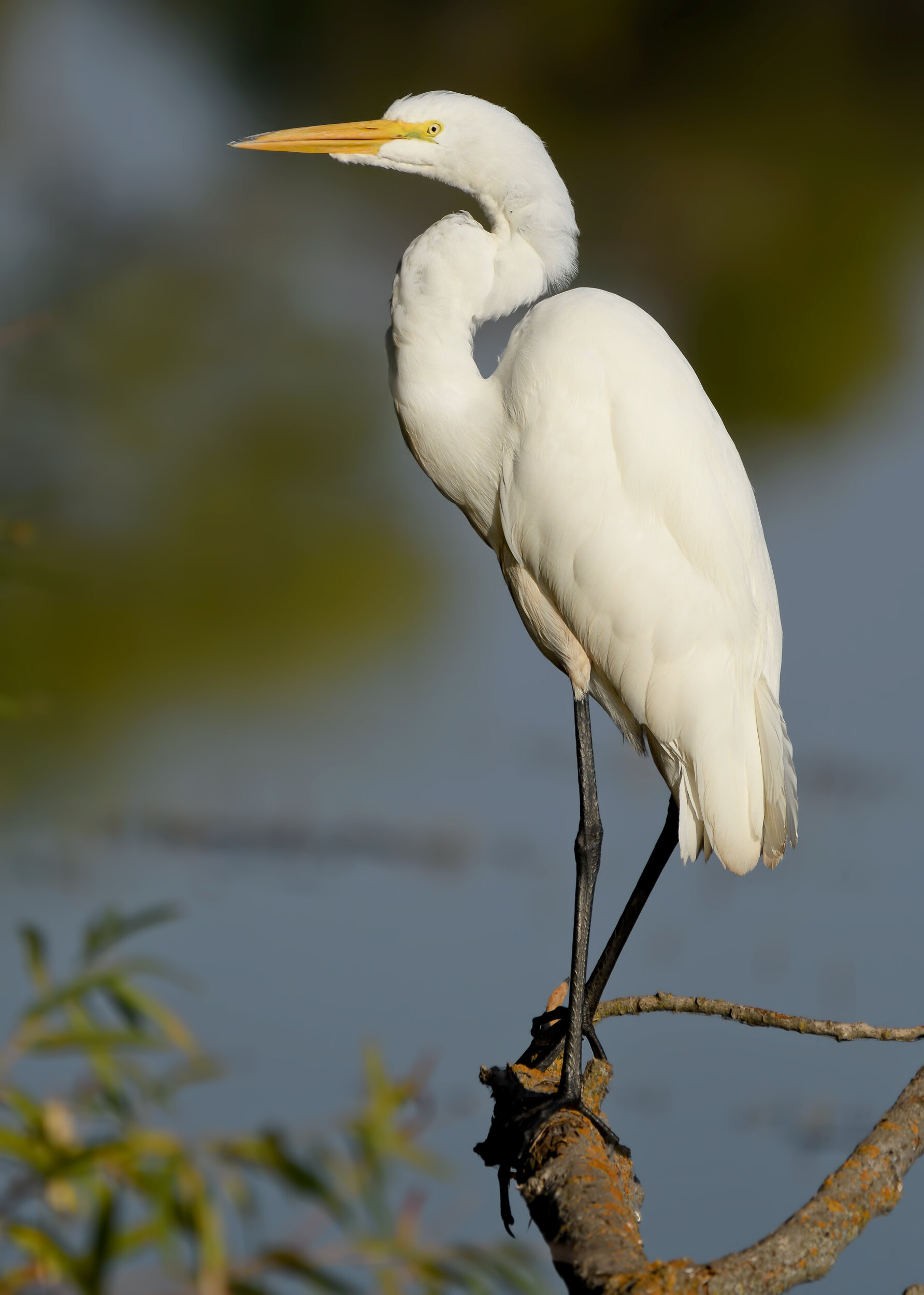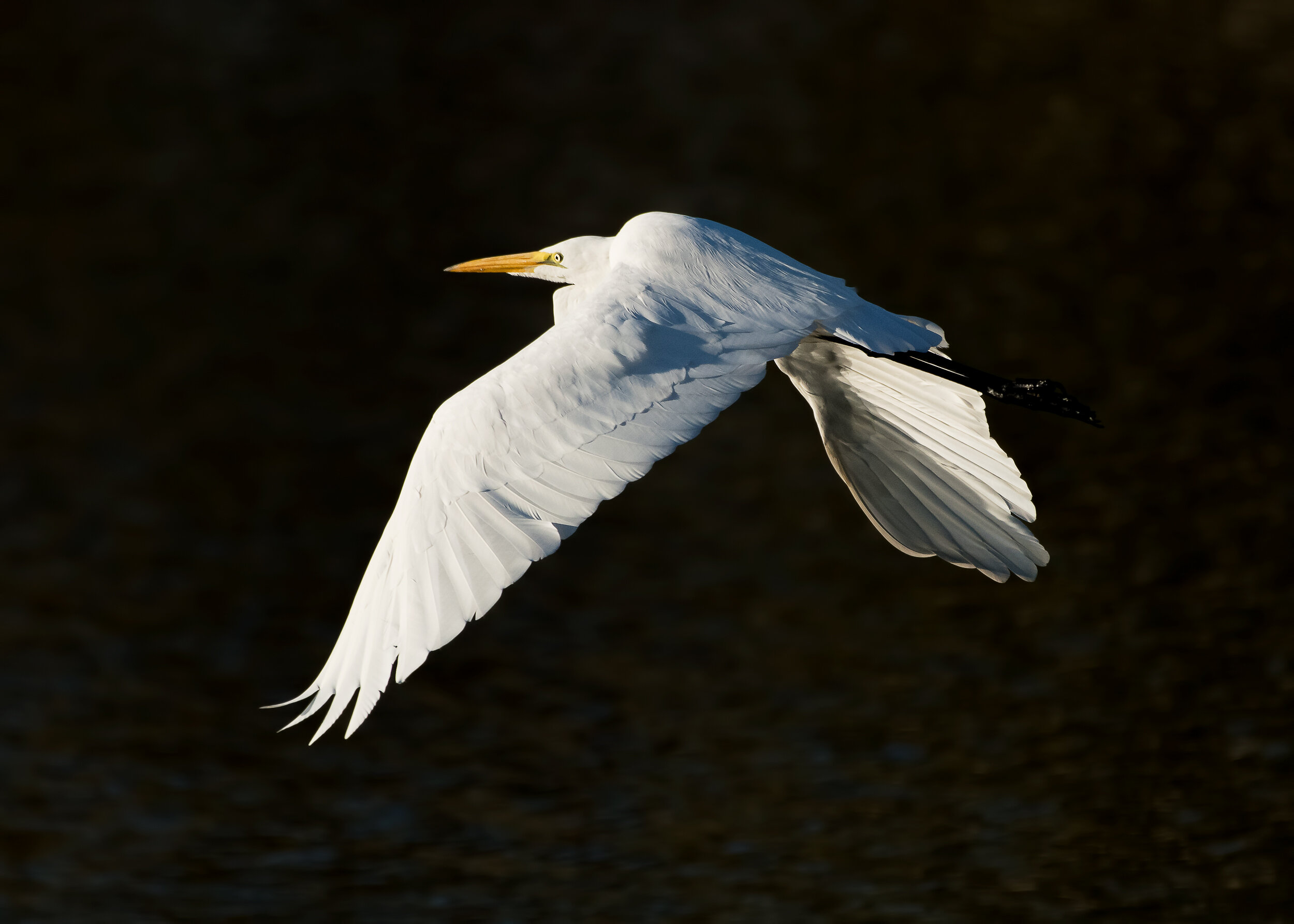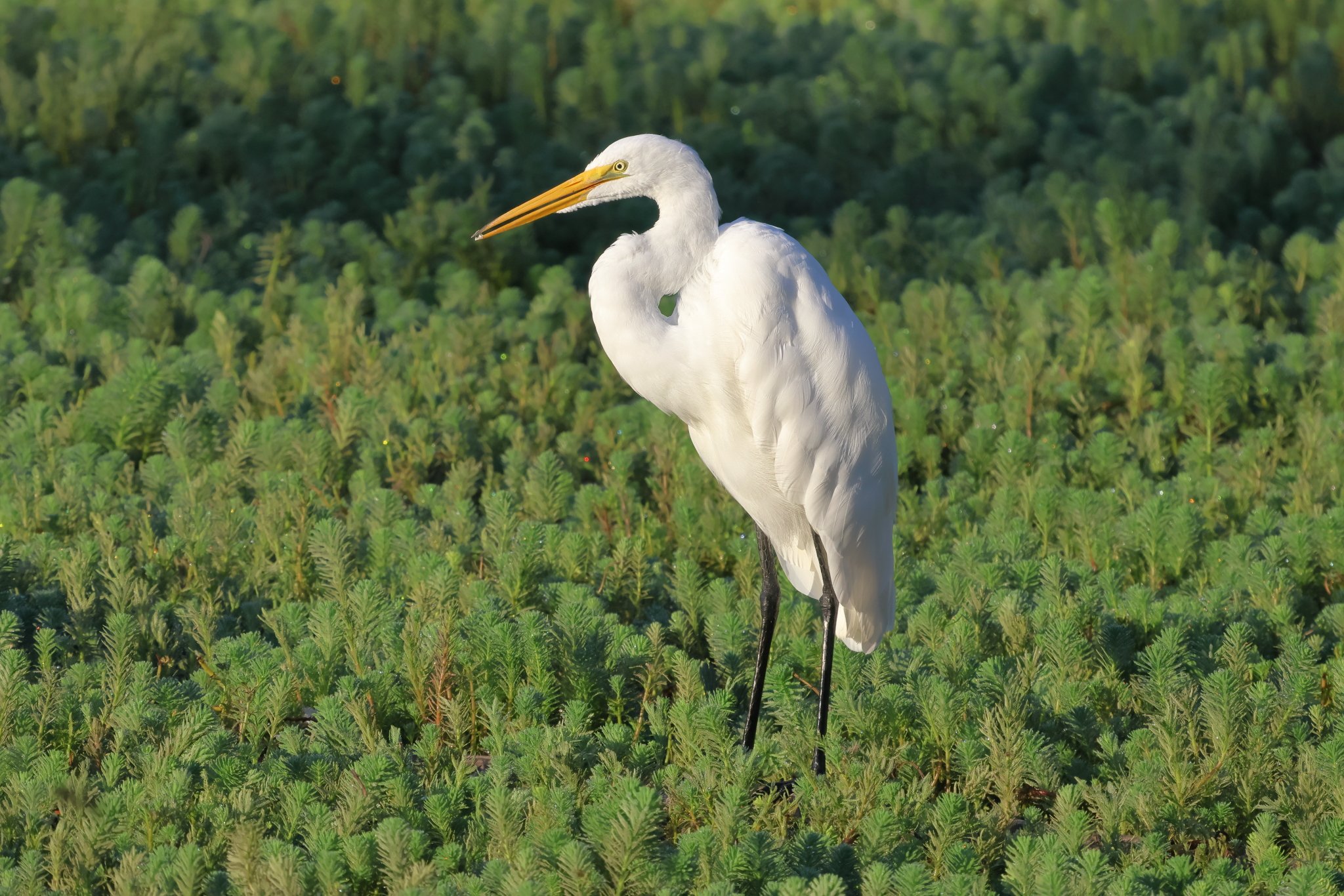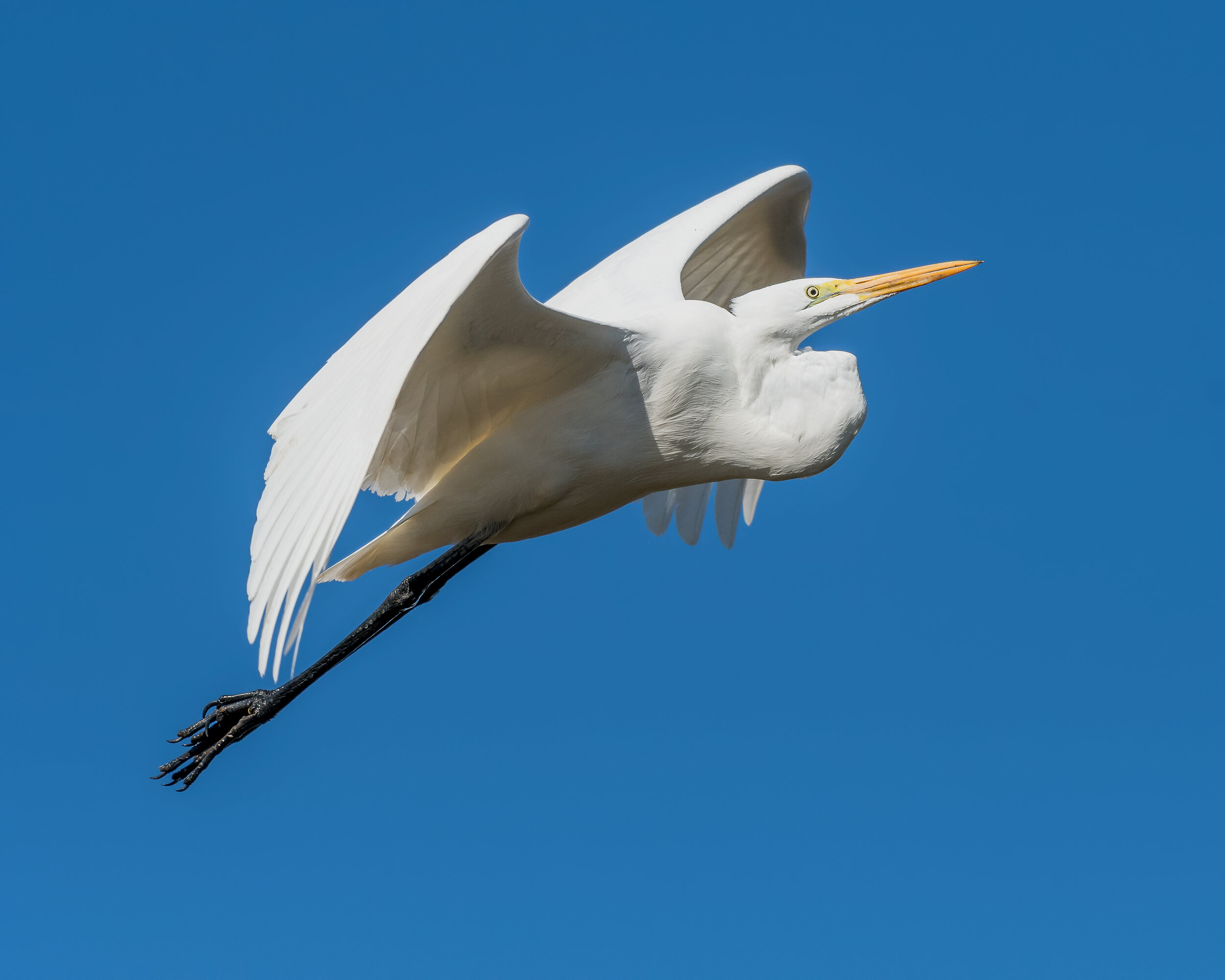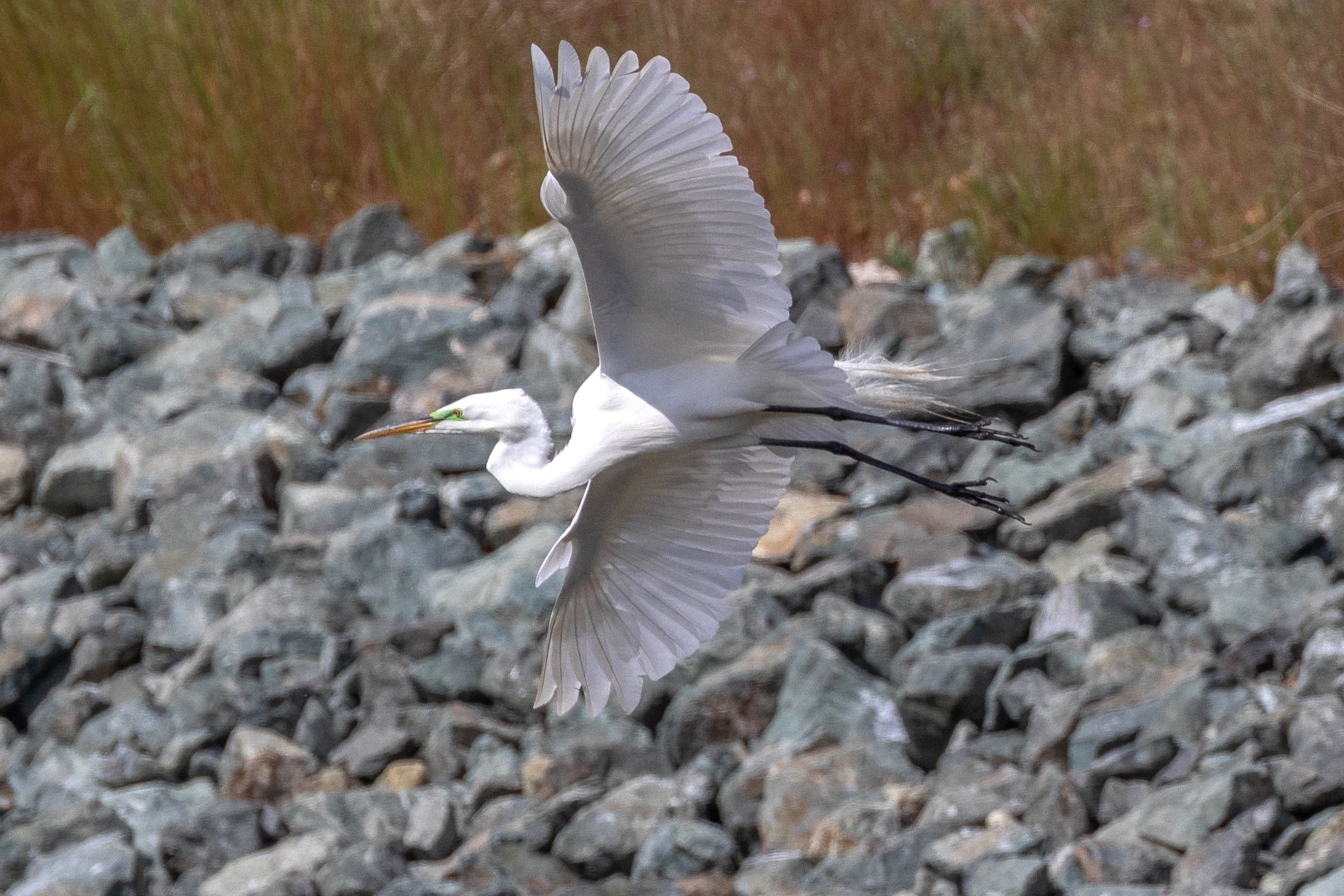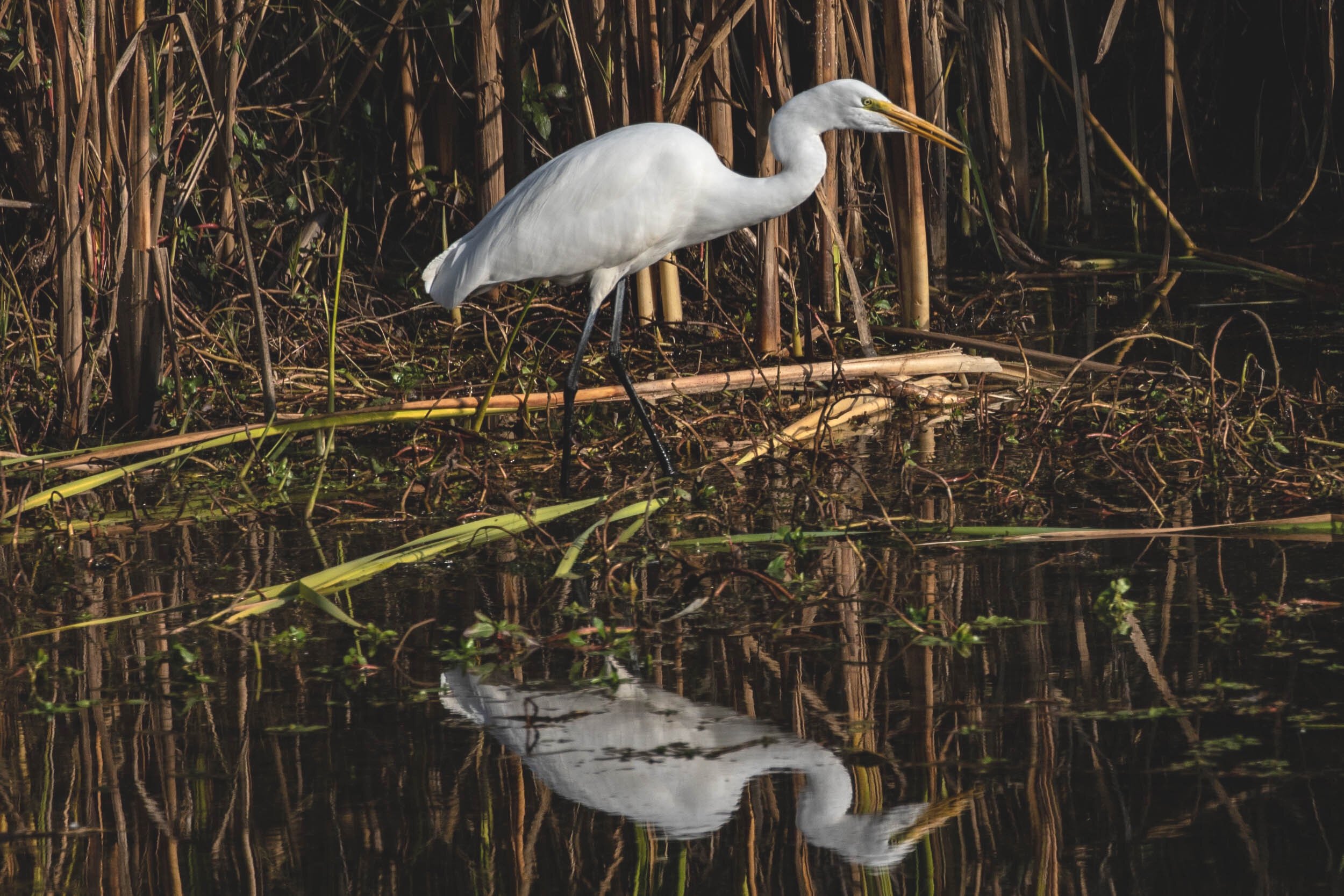Great Egret, Image by Larry Hickey
This month, let’s learn about an elegant bird called the Great Egret. It is a member of the heron family and is found on all continents except for Antarctica. You may have seen a Great Egret near your home by a creek or along a roadside drainage ditch. The Great Egret lives year-round in the Sacramento Valley; but is considered to be a partially migratory species. Flocks in more northern areas may travel southward to enjoy a warmer climate during the winter months. Great Egrets can travel as far south as the West Indies or southern Central America. They fly fairly slow; but are powerful flyers. The population of Great Egrets has made a great comeback since the late 1900’s when their feathers were used for hat decorations, etc. This practice was banned in 1910. Great Egrets are now under the protection of bird conservation laws. The National Audubon Society’s organizational symbol is that of a Great Egret in flight!
What do Great Egrets look like?
Great Egret, Image by Larry Hickey
Great Egrets are completely white in color except for their orange-yellow bills and dark legs. Male and female Great Egrets look exactly alike. They are over three feet tall and have impressive wingspans of almost five feet. Great Egrets have long curved necks, long legs, and long toes. They also have long bills that are very sharp and are shaped like a dagger. Great Egrets tuck in their long necks and position their long legs behind their bodies during flight. At the start of nesting season, these beautiful birds become even more spectacular when they grow long, graceful, white plumes of feathers from their backs, which curl over their tails, called aigrettes. Great Egrets also develop an area of skin on their faces that turns a neon-green color this time of year!
Great Egret with aigrettes, Image by Larry Hickey
Where do Great Egrets Live?
Great Egrets usually stay in habitats that have areas of either saltwater or freshwater nearby. They are seen near marshes, ditches, canals, ponds, tidal flats, rivers, streams, swamps, lakes, estuaries (or water passages where the ocean tide meets a river current), and flooded farm fields. Great Egrets are usually solitary birds when not nesting. But they also can gather together from surrounding areas to form a place where a large group can rest or sleep, called a communal roost. Frequently, several pairs build nests in the same tree and form a colony; but occasionally a pair may nest alone. Great Egrets often share colonial nesting sites, or rookeries, with other egret species, herons, and other wading birds as well. They build their nests in trees, thickets, or shrubs 10-90 feet above water or ground. Nesting colonies are usually located in extremely tall trees. Great Egrets build large platform-style nests using sticks and line the nests with plant material. Both parents help to build the nest, incubate (to sit on and keep the eggs warm) the eggs, and feed their young. The young will be able to fly in 6-7 weeks after hatching.
Great Egret, Image by Daniel Lee Brown
What do Great Egrets Eat?
The preferred food of a Great Egret is fish; but they also eat crustaceans, aquatic insects, grasshoppers, frogs, snakes, rodents, mice, rats, rabbits, and many other small animals. Because of their powerful bills and quick responses, they are skilled hunters in both shallow water and on dry ground. In shallow water, Great Egrets wade slowly. Then, without moving, they wait for a fish to come near. Their spear-like bill is able to grab the fish in an instant.
Great Egret parents feed their hatchlings (or babies) partially digested food that is regurgitated (food brought up again to the mouth). The parents will feed their babies this way until the young are able to eat solid foods.
What do Great Egrets Sound Like?
Most of the time, Great Egrets are fairly quiet birds. But if one is disturbed or when in a breeding colony, Great Egrets can make some interesting sounds. Listen to the Great Egret now:
These calls of the Great Egret are from xeno-canto. More Great Egret vocalizations can be found at xeno-canto.org/species/Ardea-alba.
